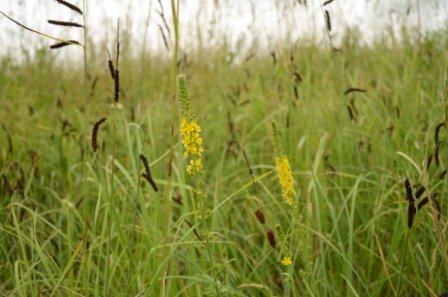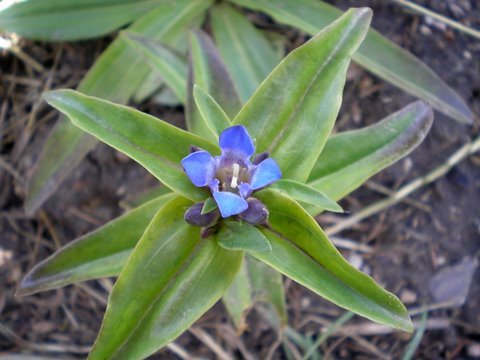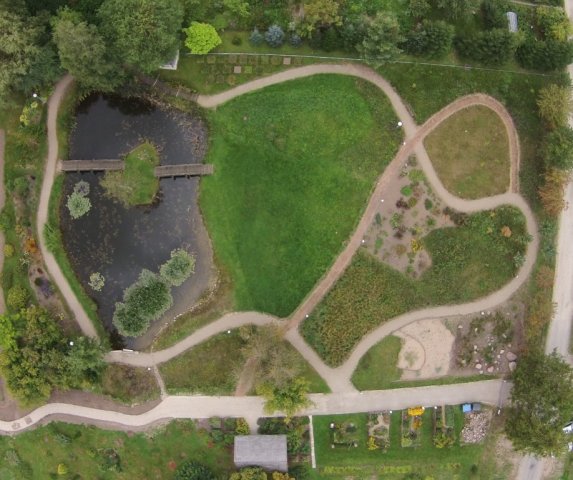The purpose of the division is to gather a rich collection of Lithuanian plants for biological variety preservation, carrying out cognitive activities and scientific research.
The division includes representatives of 200 species from 60 families. The largest family includes grasses with 17 plant species. The exposition (collection) of the division contains:
- Traditional Lithuanian gardens (from pre-war, interwar and post-war periods)
- Plants belonging to grasses family
- Weeds
- Medicinal plants
- Wetland
- Boulder field
- Hornbeam forest community
- Forest meadows
- Steppe meadows
- Wet meadows
- Flood-meadows
The origin of division’s plants
All of the plants in the division are Lithuanian flora representatives. The majority of plants are gathered from Šiauliai and Joniškis districts.
Growing conditions
The area of division contains 0.13 ha. The plants grow in separate biotopes, consisting of forest, steppe, flood meadows and a wetland. The biotopes hold the most favourable growing conditions, closely resembling those of natural habitats. Natural irrigation conditions are provided to the majority of plants, where plants preferring dry areas are grown in sand and gravel, while plants adapted to wet areas are grown in a wetland.

Garden angelica (Angelica archangelica), located at the collection of medicinal plants, is a medicinal and spice plant. The young leaves and leafstalks of the plant are edible and are used as a flavouring agent for sweet dishes and strong liqueurs, such as Bénédictine and Chartreuse. According to a legend, the healing properties of angelica plant were shown by the archangel Michael. During the Middle Ages garden angelica was cultivated in monastery gardens and was considered to be an effective remedy for the plague.Fascinating plants
Meadow-sweet (Filipendula ulmaria), commonly found in flood-meadows, is a medicinal plant, used in the production of homeopathic preparations. All parts of the plant contain salicylic acid, hence the infusion of meadow-sweet plant can be used as an alternative to aspirin. Interestingly, Celtic Druids considered meadow-sweet to be a sacred plant due to its healing properties.
The division also contains a number of plants included in the Lithuanian Red Data Book. Weeds, growing near a red trail, such as fieldmadder (Sherardia arvensis), parsley piert (Aphanes arvensis) and meadow polycnemum (Polycnemum arvense) are exceptionally rare. These plants are written in the Red Book of Threatened Species.
The blooming season
Summer is the best season for visiting the division. Plants growing in a wetland, including bird’s-eye primrose, common butterwort, narrow-leaved-cotton-grass, spotted palmate orchid and flesh-coloured marsh orchid start flowering as early as May. Various medicinal plants blossom from June to August while the period from July to August is the peak bloom of meadow grass.

The division was started in 2011 based on the idea proposed by J. Tamutytė while carrying out the project titled “The cognition and preservation of the distinctive identity through the environment of Ziemgala region”. The collection was created for cognitive and scientific purposes, allowing the visitors to learn about rare plants, their communities and habitats as well as providing ideal conditions for students to practice and conduct scientific research on Lithuanian flora.Short history
The division of Lithuanian flora is located in an area near the pond. Until the year 2011 there used to be an experimental field with apple tree garden, plants from alpine and floriculture divisions along with the exposition of ornamental coniferous trees.
Bird’s-eye primrose plants were grown in pots and the medicinal plants of Lithuanian flora, received from a pharmacist J. Balvočiūtė, were propagated in raised garden beds. Later a mound was formed near the flood meadows. The trails were paved in 2011 and, in 2012, plants brought from expeditions and taken from Botanical garden collection of rare plants were planted and sown. The division’s formation works are carried on to this day with new plants being continually introduced to the collection.
The division is administrated by the supervisor of Botanical collections Virginija Aleknienė, e-mail:

